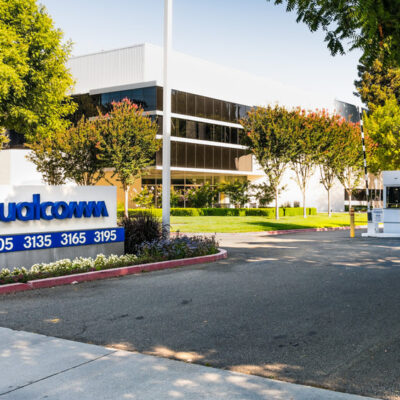If this were 1970, Bob Dylan may have sung “Storm clouds are raging all around my door I think to myself I might not take it anymoreâ€. Today, these words seem to reflect Jamie Dimon’s mood and of a growing cohort of top financial and business leaders. The CEO of JPMorgan Chase, spoke about his outlook on the economy last week and said that he foresees an “economic hurricaneâ€.
Rather apocalyptic imagery from one of the world’s best-known bankers. He isn’t alone. Elon Musk had a “super-bad feeling†about the direction of the global economy, while economist and founder of Euro-Pacific Capital, Peter Schiff, felt that Dimon was “sugar coating it a bitâ€.
Are you looking for fast-news, hot-tips and market analysis?
Sign-up for the Invezz newsletter, today.
Dimon, himself, did try to soften the inevitable blow by perhaps offering the customary sympathy, “We just don’t know if it’s a minor one or Superstorm Sandy, or Andrewâ€, but “you better brace yourself.†He confirmed that the bank would be much more conservative amid the prevailing environment.
If you’re a consumer, as most of us are, that should probably send shivers up your spine.
After two years of harsh global lockdowns, overwhelming monetary and fiscal stimulus, fragile supply chains, and even an ongoing hot war, the global economy seems to have finally run out of luck. The US economy contracted 1.5% in Q1 2022, the first fall since Q2 in 2020, at the beginning of the pandemic.
The crucial consumer price index in the US has surged to above 8% year on year, taking bond yields higher with it. Treasury yields climbed to 2.944% at the time of writing, threatening to breach 3%. The S&P 500 is down 13.8% this year, including eight successive weeks of losses as the Fed tightens monetary policy.
A slowdown combined with high inflation could spell coming disaster.
U.S Jobs
The recent surge in treasuries was a response to strong-than-expected payroll data, with the addition of 390,000 new jobs last month.
The jobs report was expected to show a high number, with the JOLTS, published earlier in the week, finding that the labor market was extremely tight. Job openings in the US had fallen by nearly half a million and were equal to 7% of the labor force. The labor force implies anyone capable of taking up a job, whether they are employed or actively seeking work.
In developed countries, wages have a tight relationship to inflation, known as the wage-price spiral. When the labor market is tight, wages rise and when wages rise, companies find costs rising and consumers with higher disposable incomes. This leads to markups on products and services, leading to higher inflation, with the cycle repeating.
The strong jobs data strengthens the case for a 50-basis points rate hike by the Federal Reserve in its next two meetings, while it poured water on the notion of a “Fed Pauseâ€. The Fed will likely need to continue to accelerate its rate hikes as the jobs data dispelled notions of an inflationary peak while leading indicators of consumer inflation such as the Producer Price Index were in the 11% range.
The US Department of Agriculture forecasts an increase in the price of eating at home to rise by 7-8%, a prohibitive increase for the average American. The surge in gasoline prices is already pinching.
Moreover, the US Fed initiated quantitative tightening last week and this is bound to lead to higher volatility in the markets.
Even Raphael Bostic of the Atlanta Fed, who had earlier floated the idea of suspending rate hikes come September, seemed to dial back his statements when he said he is comfortable raising rates if inflation stays high.
Stagflation?
Jamie Dimon is right to be concerned that raising rates to curb inflation in a fragile economy could be catastrophic for the average person on the street.
Stagflation is the worst of both worlds – chokingly high inflation coupled with perilously low growth. With commodity prices surging and supply chains disrupted, there are some similarities with the economic turmoil of the seventies and eighties.
Several surveys by departments of the Federal Reserve such as the US Empire State Manufacturing Survey, Richmond Manufacturing Survey, and Dallas Fed Manufacturing Outlook of General Business Activity have fallen into the red.
This is in contrast to recent ISM Manufacturing Survey data which surprised the markets by showing an improvement to 56.1 % from 55.4% in the previous month. However, Timothy R Fiore, Chair of the ISM Manufacturing Business Survey Committee, said that the increase was mostly “demand-drivenâ€, but noted that “supply chain and pricing issues as their biggest concernsâ€.
Much of this demand may be a result of the extraordinary fiscal stimulus payroll protection instituted during the pandemic, which is now slowly petering out.
Of course, one data point does not a trend make. Leading economists such as Lawrence Summers and Llyod Blankfein, share Dimon’s view that inflationary pressures are mounting and a recession is becoming ever-more likely, pushing a soft landing out of reach.
Moreover, the ISM Employment index contracted to 49.6%, suggesting that layoffs are coming, as seen in the tech sector last week.

Fed Credibility
Dimon did give a nod to the Fed saying that “Everyone thinks the Fed can handle thisâ€. Not everyone is so optimistic.
In the recent past, the Fed has made some questionable decisions including a decade of easy monetary policies, the reversal of tightening in 2019, an insistence that price pressures were transitory forcing an admission of being mistaken by Treasury Secretary Janet Yellen, and the unprecedented inflow of fiscal stimulus.
In the world of inflation expectations, the Fed’s credibility is central to the efficacy of policy.
With that credibility rattled, investors aren’t so sure that the Fed can cut high inflation down to size, and more importantly, do it while landing softly.
Danielle DiMartino Booth, CEO of Quill Intelligence, and an advisor to the Dallas Fed from 2006 to 2015 believes that the Fed has the potential to “allow controlled explosions within US creditâ€, in a bid to bring down inflation.
If such a scenario does materialize, the average American can expect a lot of pain in the future. She also thinks that there is “every reason to believe that the US economy could be looking at a second consecutive contraction in the next quarterâ€.
Even Mr. Dimon admitted that QT could not bring the US Fed balance sheet back in sync until 2026 or 2027, which means financial conditions will continue to get tougher for an extended period.
Economic compasses
Over the last decades, investors have become accustomed to low risk, high liquidity, and easy money policies. However, at least for now, runaway inflation seems to have swung the pendulum, and interest rate hikes and quantitative tightening are expected to continue.
Although bearish rallies may emerge, conditions suggest that we may be already very much in a bear market today, presenting an entirely new picture that investors will struggle to navigate.
The QT will likely force greater volatility in financial instruments and this may threaten the savings of ordinary folks. Not to mention the emotional toll such a period can take along with the difficulty in knowing if and when one should exit the market.
By tightening policy in the face of geo-economic headwinds, perhaps a necessary evil today, things are going to get much harder for both consumers and investors.
Where to buy right now
To invest simply and easily, users need a low-fee broker with a track record of reliability. The following brokers are highly rated, recognised worldwide, and safe to use:
- Etoro, trusted by over 13m users worldwide. Register here >
- Capital.com, simple, easy to use and regulated. Register here >
*Cryptoasset investing is unregulated in some EU countries and the UK. No consumer protection. Your capital is at risk.





